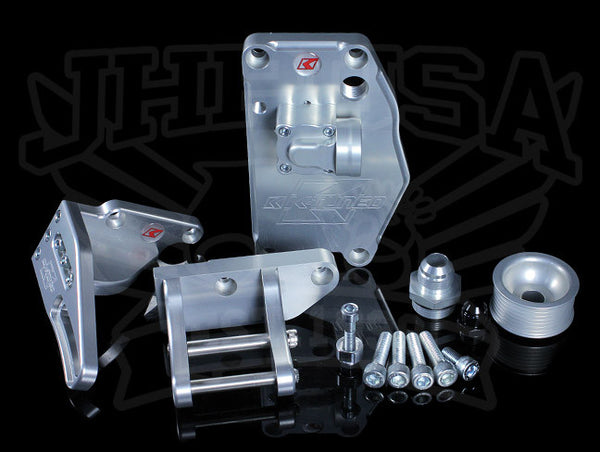Good day and welcome.
This an imperfect listing of K swaps here on the forum:
https://xwebforums.com/forum/index.php?tags/box-k20/
There was a thread which covered this to a decent degree, sadly due to the pics being hosted elsewhere the images are no longer available. I may have created a PDF of part of this thread which is on my computer, I will check a bit later as I am on my iPad right now.
This is the thread:
https://xwebforums.com/forum/index.php?threads/almost-no-cut-k20-swap.27825/
This is his member name and a way to contact him:
https://xwebforums.com/forum/index.php?members/dennisrh.2187/
Here are a couple of snips from that thread which directly relate to your question:
I then began test fitting the engine on the subframe into the X to see where it was absolutely necessary to cut. To my surprise the only place where my engine was hitting and absolutely needed to be cut was the drivers side wheel well, where the transmission housing was hitting. I didn't take a picture of the area, but if i remember to, I will when I remove the engine to paint the engine compartment. Basically the area where the indentation is for the X 1/9 transmission needs to be opened up to allow for the larger transmission. Instead of cutting the whole frame rail like the otehr K20 builds i saw online, I cut a very small section of the rectangular frame rail out and then bent the metal together making the frame rail more triangular than rectangular. I removed about 1.5 inches width x 8 inches length. I removed a little metal at a time and then test fitted over and over again until I had made enough room for the transmission. The clearance is extremely close, but so far after driving the car for about 3 weeks I haven't had any rubbing or knocking of the transmission against the frame. The engine fit pretty nicely within the engine bay of the X 1/9 with absolutely no cuts to the front frame or firewall. Only problem was, I wasn't going to get the water pump alternator or intake manifold back on without doing some modification to the engine bay. First thing I found is that you can delete the water pump on a K20 and put an electric water pump in its place. This not only saves space and weight, it reduces drag on the engine, so more power as well and it relocates and changes the alternator from the large heavy RSX alternator to a smaller alternator from the base civic. The civic alternator is smaller and closer to the engine block than the RSX alternator and it plugs right into the RSX wiring harness, no modification necessary. (its amazing what these Honda guys have all ready figured out for this engine for drag racing)
I had successfully reduced the amount of room I would need for the water pump, alternator and pulleys on the engine. I test fitted the engine and installed the water pump block off plate with the alternator on it and put the belt on the pulleys. The belt hit the corner of the engine bay, so I needed to make an indentation in the frame rail to allow for some clearance. I bent the metal rather than cutting it and was able to make about an inch and a half of clearance just bending it. This was enough to allow for the belt.
This is how he dealt with the water pump and plumbing changes. Some have turned to the 124 type bypass thermostat as a means of dealing with that issue:
The electric water pump kit came from K-Tuned as well as my fuel rail and various other stuff I got for the Honda engine. With the electric water pump as I have my setup
This new K-Tuned water plate kit now incorporates two o-rings seals. You no longer need to seal the water plate with Honda Bond. This will make it easier switching the water plate between blocks. The alternator brackets have both been redesigned to be stronger and incorporate more adjustment...

jhpusa.com
I will do some more digging. I hope this helps. I will check on the images/pdf (no guarantees).

